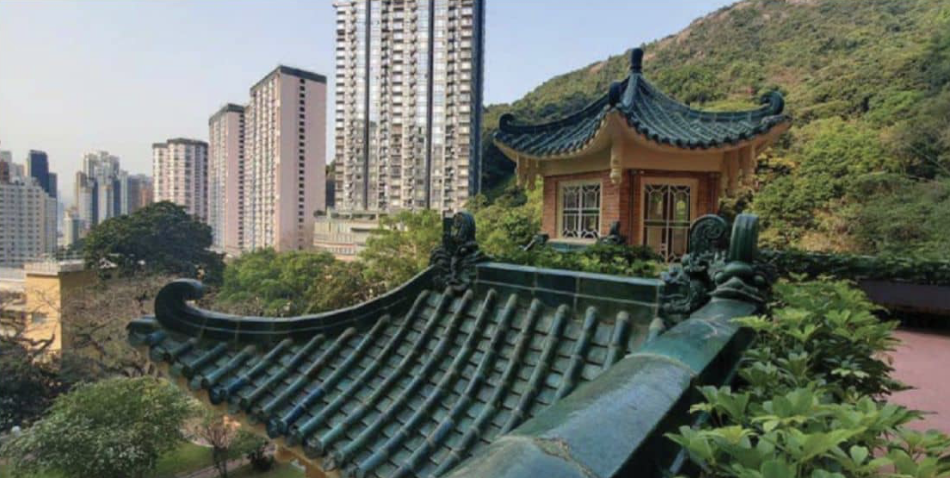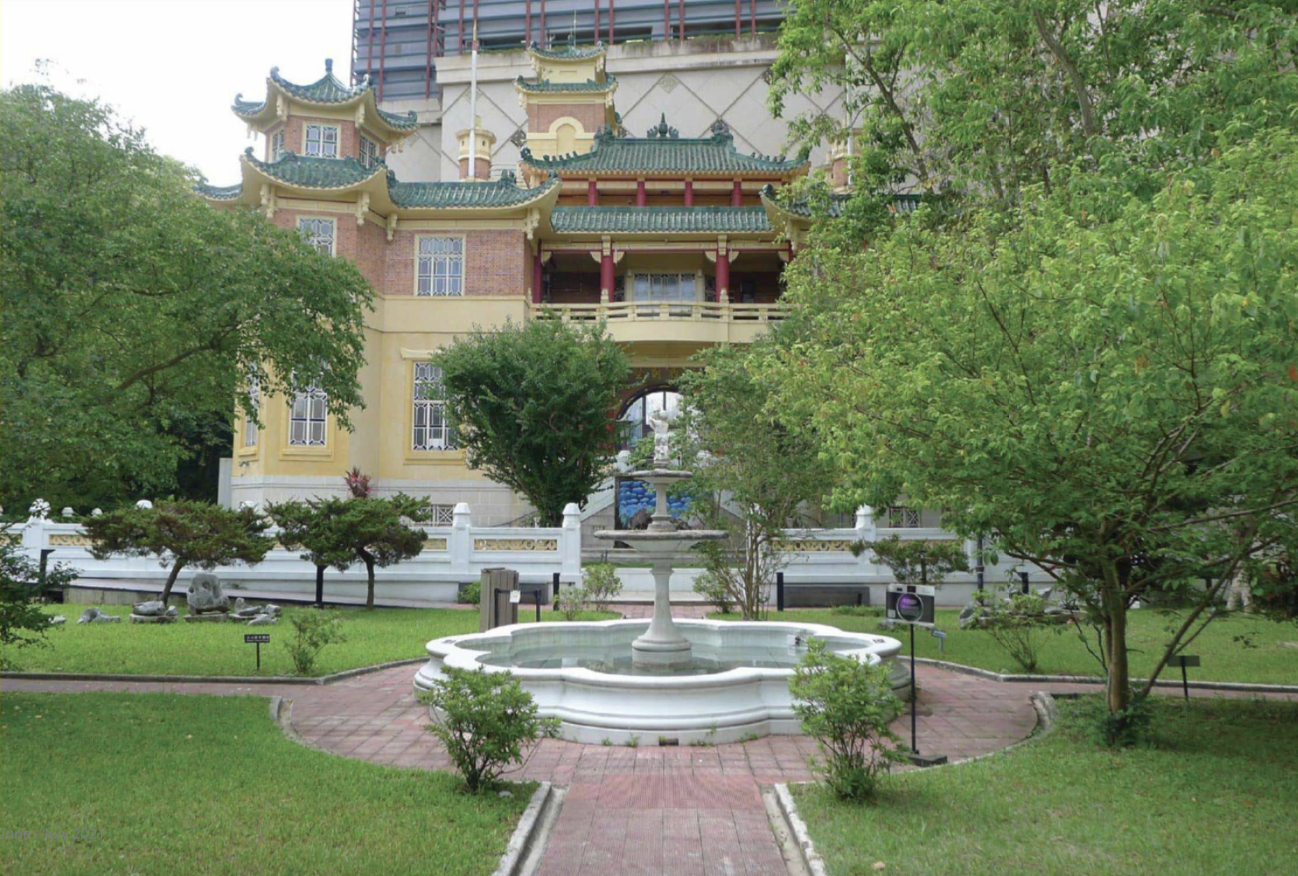The Tiger Mansion
Everyone in Southeast Asia knows about Tiger Balm. A topical medication with ingredients including camphor, cajuput oil, clove oil, and menthol, this soothing balm has eased the aches and pains of many generations. Its regional success raised its creators, brothers Aw Boon Haw and Aw Boon Par, to prestigious positions in Southeast Asian society.
The brothers also reshaped the modern landscapes of two major cities, Singapore and Hong Kong. Haw Par Mansion is one of few remaining examples. Located in Hong Kong’s Mid-Level district, Haw Par is a unique 1930s compound surrounded by high-rise residential buildings. While much of Haw Par’s original property has been sold off, the mansion is now a cultural heritage site and a cross-cultural music school.
To understand the brothers behind the medicinal dynasty, we need to step back in time to Myanmar in the mid-19th century. As a Hakka originating from China’s Fujian province, their father Aw Chi Kim settled in the Burmese capital, Rangoon, in the 1860s. Here he met and married a local woman named Lee Kim Pek. Aw Chi Kim established a small herbal shop called Eng Aun Tong (“Hall of Everlasting Peace”). The couple bore three sons: Boon Leung (“cultured dragon”), who died before reaching adulthood, Boon Haw (“cultured tiger”), and Boon Par (“cultured leopard”).
The two remaining sons were well-educated. Boon Haw attended Chinese schools, and after completing his formal education in Yongding, returned to his home city. Boon Par went further with his studies, receiving an education in Burma and becoming fully fluent in Chinese, English, and Burmese.
Following their father’s death, the brothers inherited the herbal shop. Eager to continue and expand the business, Boon Haw re-established connections with his father’s suppliers and studied the advertising methods utilised in Thailand, Hong Kong, and Japan.
His market research led to the creation of the infamous Tiger Balm image: a tiger prepared to pounce, jaw wide open and paws extended to signify stamina and potency.
When the brothers moved their headquarters to Singapore, they diversified their business portfolio. In 1929, they launched the Sin Chew Jit Poh newspaper. Six years after establishing a production facility in Hong Kong, they also launched the Sing Tao Daily newspaper in the colonial port city. By expanding into the print business, the brothers ensured advertising space for their products and strategically targeted mercantile communities throughout the southeast.
Ever industrious, the brothers also ventured into banking, rubber production, and real estate. Their financial success was showcased by mansions the brothers had built in Singapore, Hong Kong, and Fujian. The two private estates in Singapore and Hong Kong included adjacent theme parks open to the public. These spaces were designed to promote traditional Chinese values, a drive that stemmed from Boon Haw’s concern that ethnic Chinese residents in these two cities were losing touch with their cultural identity. Besides promoting Buddhist, Taoist, and Confucian morality, the theme parks also highlighted the product that made their family fortune.
Haw Par Mansion (named after the two brothers), was constructed for Boon Haw’s second wife, Tan Kyi Kyi. As she preferred Hong Kong for its cosmopolitan atmosphere and more moderate climate, Boon Haw bought a lot on the steep rocky climes of Tai Hang Road for her residence. The private estate was an architectural marvel. Built in the Chinese Renaissance style, the property incorporated a blend of Western and Chinese construction methods and architectural theory. From the 1920s to the 1960s, Chinese Renaissance architecture saw an incredible revival as Chinese motifs were incorporated into Western architectural foundations.
The mansion is now one of Hong Kong’s few surviving specimens of Chinese eclectic architecture. Completed in 1936, Haw Par sits on a private garden spanning eight acres. Western architectural symmetry appears in porches, bay windows, and fireplaces. The interior is stunningly decorated with stained glass windows sourced from Italy. These seamlessly match the carvings and mouldings that decorate the high-ceilinged foyer, alongside gilded gold and murals that show Indian and Burmese influence.
A moon-gate inspired door greeted visitors in the mansion’s original entrance (since converted into a display space). Parquet wood floors and intricate polished wood furniture ushered dignitaries and visitors into the original hall (now a piano room).
The Tiger Garden, located in the west, is decorated with regional plants. Originally this area housed an eight-storey-tall pagoda, which was a significant visual in Hong Kong’s 1980s tourism adverts.
After the surviving family member - adopted daughter Sally Aw - lost the family fortune during the 1998 Asian financial crisis, Haw Par Mansion and Tiger Balm Garden were sold to Li-Ka Shing’s property company, Cheung Kong.
While the mansion and private garden were preserved and passed to the government in 2001, the public garden was demolished in 2004 and redeveloped into residential complexes.
In 2009, the private property was accredited with a Grade 1 Historic Building status. With the combined efforts of the government’s historic building revitalising scheme, Aw Boon Haw Foundation and Haw Par Music Foundation Ltd, the estate was renamed Haw Par Music.
As a meeting point for cross-cultural musical exchange, heritage, and arts, Haw Par Music combines the artistic merits of music and history, translating these values into education and arts programmes for the Hong Kong community. To meet these goals, acoustic panels were added into the mansion while restoring the external walls and decorations to their original 1930s look. With 15 rooms in total, patience was a key element in finding the perfect room for each distinct sound.
Sheryl Lee, Executive Director of Programming at Haw Par Music, said, “one small thing can affect [the] acoustics and the artist.” And there are lots of styles to take into consideration. As a “juxtaposition between East and West”, all genres exist under one roof. Haw Par Music holds the double distinction of being Asia’s first music academy that is both dedicated to Chinese and Western chamber music studies and located in a heritage building.
At Haw Par Music, the arts are a way of reaching out to the wider community, and all students expected to join social programmes. One such programme is “Chamber Scramble”, a high-level project that invites trained musicians of all ages to enjoy the “universal language” of music. Skilled players aged 18 and above have the opportunity to learn from and enjoy music with generations far removed from their own. For the elderly especially, this practice enlivens many memories and boosts their self-confidence. Other social and musical programmes run by Haw Par Music involves musical practitioners, occupational therapy through different NGOs, integrated music and wellness sessions, and short-term programmes on music technology and production.
“All of our students prefer to come here for lessons,” Lee said. “They feel safe; the rooms are very large, very peaceful. The environment is very conducive for any sort of learning, [and] people in general feel a lot more zen.” At Haw Par Music, external collaborations are encouraged and celebrated.
Even in a world as uncertain as ours, the school has found ways to keep the music going. While all group classes are halted, individual lessons continue on site.
“Music is intangible,” Lee explained. “[We] have to overcome. . . . The teachers are really supportive. Getting everyone on board, [they take a] holistic [approach and] want to engage creativity.” With the combined efforts of an internationally recognised faculty, many continue to enquire into enrolment at the music school. Moving forward, the school will approach challenges the same way they approach musical pieces. “[We] have to play it by ear, be flexible, and adapt.”
Originally published in CULTURE Magazine Issue 198 (June-July 2021)

